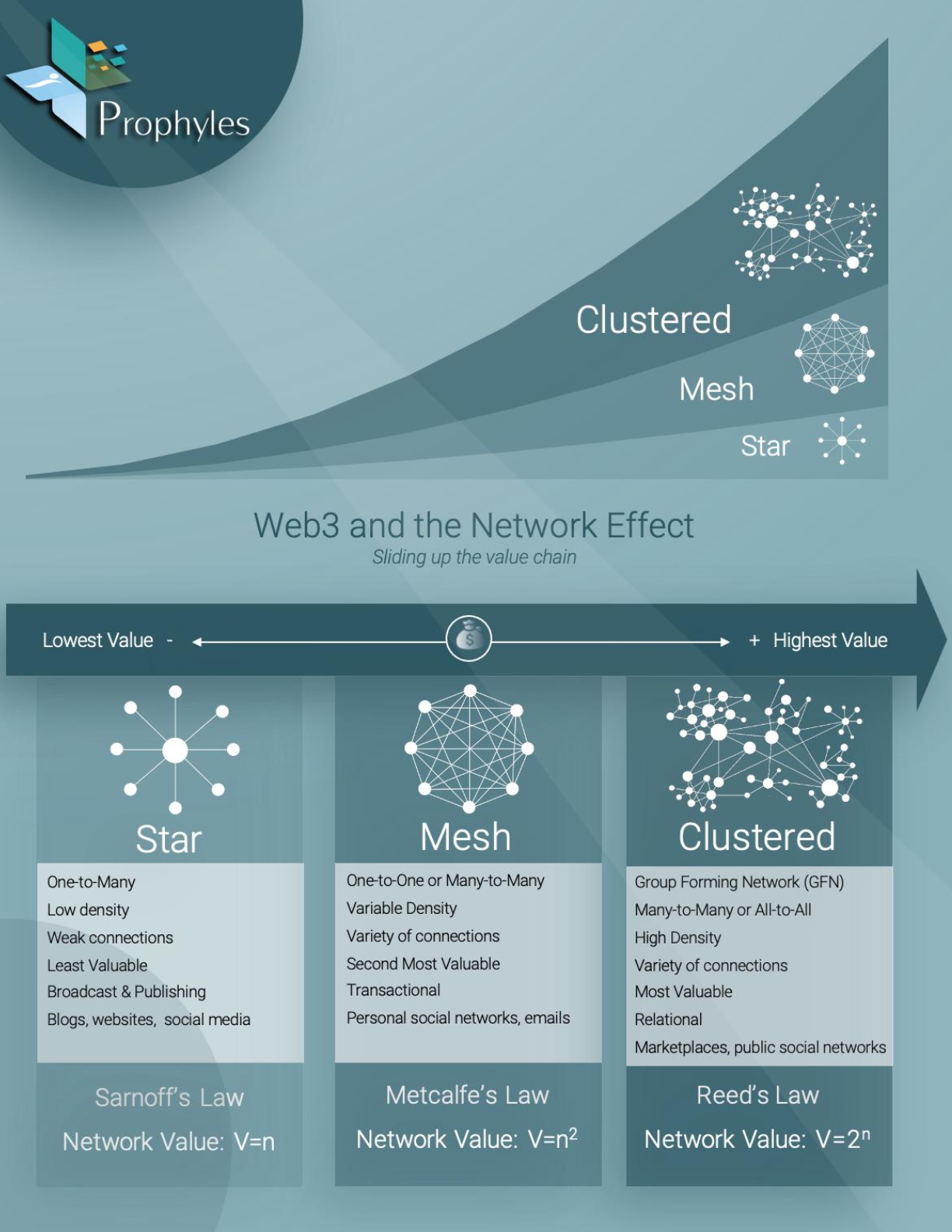 Web3 and the Network Effect Sliding up in the value chain
Web3 and the Network Effect Sliding up in the value chain
The value chain of software includes three types: utilities like calculator or map, applications like accounting or HR, and networks like address books or social networks. Utilities are the least valuable while networks are the most valuable to users, founders, and investors. This post focuses solely on networks.
There are several network topologies such as star/hub, bus, ring, mesh, tree, hybrid, daisy chain, and point-to-point. Each type of network has different properties such as order, size, density, defensibility, and directionality. Networks have characteristics such as scalability, security, vulnerability, fault tolerance, quality of service, congestion, and pollution. Networks could be personal or public, homogeneous or heterogenous, single-tenant or multi-tenant with several effects such as asymptotic, same-side, cross-side, direct, indirect, negative, or virality. Networks have obstacles like chicken-or-egg and switching cost. Most importantly, networks have a “Network Effect”, which is often confused with virality, implies that every user (node) added to the network increases the value of the network to all other users in the network.
This Network Effect is what makes networks more scalable, defensible, and valuable than utilities or conventional applications. In fact, network effects have been responsible for 70% of all the value created in technology since the creation of the web in 1995. Founders and investors who deeply understand how networks work are better positioned to build category-defining companies, especially in Web3.
However, not all network effects are created equal. The value of a network is calculated based on different laws which are rather guidelines than laws because they all wrongly assume that all nodes and all edges (connections or links) in a network are equal. Indeed, some nodes are just users while others are influencers with different levels such as Nano, Micro, Macro, and Mega. Also, some connections are “strong ties” in terms of closeness, activity, or durability like family members, while others are “weak ties” like acquaintances. Connections can also be directed or undirected. Networks could be Personal Networks like Twitter or Personal Utility Networks like Facebook.
The Network Effect could be calculated based on 3 main laws:
In conclusion, if you are an entrepreneur or an investor interested in Web3, understanding what type of network you wish to build matters – a lot!!!
